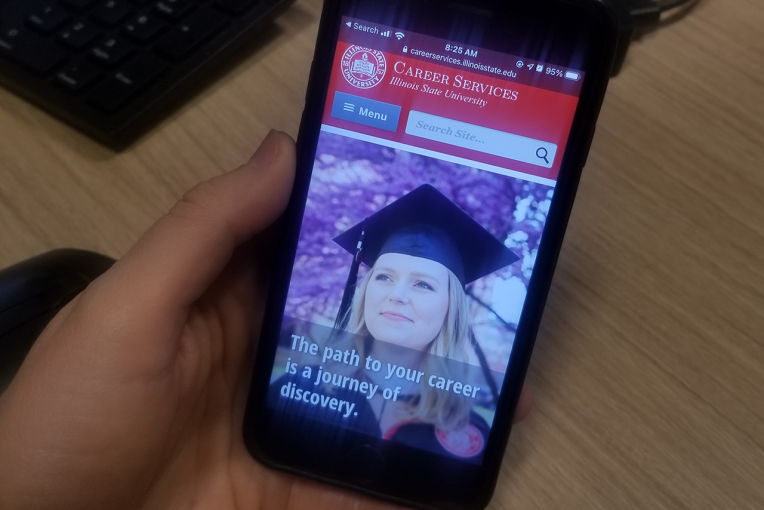As technology continues to evolve, the internet has become increasingly vital to the way we communicate. It has grown from a useful reference tool, to one that helps us navigate our daily lives.
That’s why it was only fitting that when Career Services changed its name in 2020 and moved to the Bone Student Center in 2021, the department launch a new website.
Thanks to the collaboration between Career Services and Interactive Web and Communications, the two developed a new website that allows Career Services to increase its digital engagement with its constituencies, and build its brand as a service provider.
“In Career Services, we are constantly evaluating our industry and the trends are emerging in workplaces today. Then we use that information as our approach when assisting students with their careers,” states Career Services Director Pamela Cooper.
This includes trends in digital communication. “Let’s face it. When students want information, the first place they go is Google,” states Career Services Assistant Director for Marketing and Communication Susan Whitsitt. “Whether they want to redesign their living space or write a resume, how-to videos are everywhere. However, in Career Services we provide students with more than a bunch of how-to’s. We provide them with individualized attention and support to help them achieve their career goals.”
That’s where Web and Interactive Communications came into play. “Across the University we are trying to be more conversational with our students and constituencies online; speak to them as we would face to face. We want to be more inviting in our tone and provide information in easily digestible chunks, so the average reader is able to understand it,” states Becky Barbour, website content strategist. “Our objective is to simplify content and put the user first in everything we do.”
While developing the website that objective was not only applied to the content, but how it was presented as well. “How your content is displayed on the screen is as important as what it says,” states Mary Ditchen, website designer. “The content and design need to be accessible and assist the user with being able to process the information, particularly vital when using digital tools. It contributes to a better user experience.”
One of the tactics the teams utilized was to develop personas, or hypothetical characteristics of those who most frequently utilize the Career Services site. In this way the teams could better identify what the user might be seeking when visiting online.
“The personas helped us to make decisions during the entire development process. We identified what we should include on the site, how to communicate it, and if the site would assist the user or hinder them. It helped us to identify what and how to post information on the website,” comments Barbour.
The new site assists Career Services with achieving its most important objective of all. According to Whitsitt, “Students are the main users of our site, and we are pleased to provide them with an innovative tool that allows them to access the information they need to achieve career success.”
If your website includes links to Career Services, be sure to update them so users are directed to the new site.

